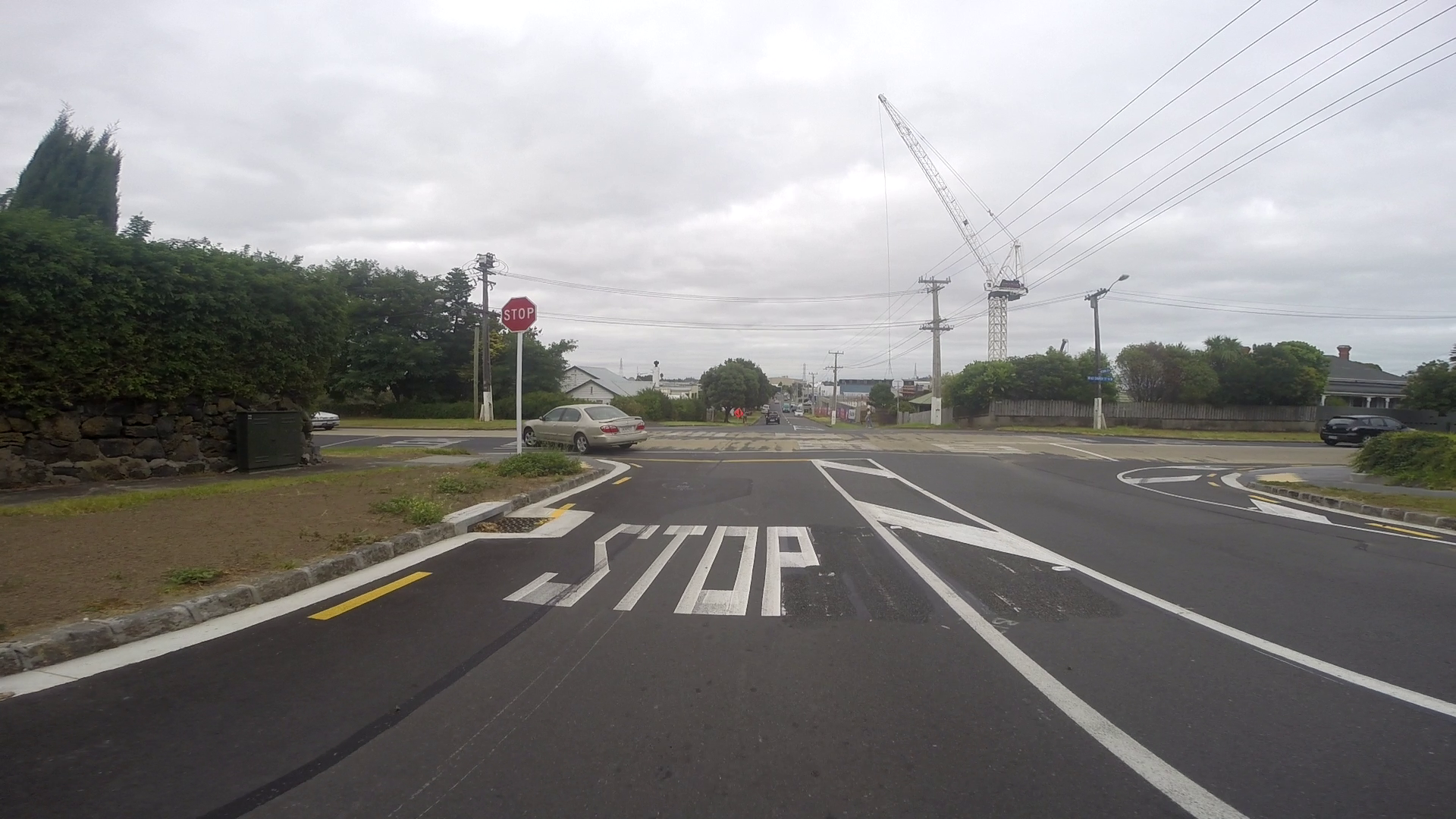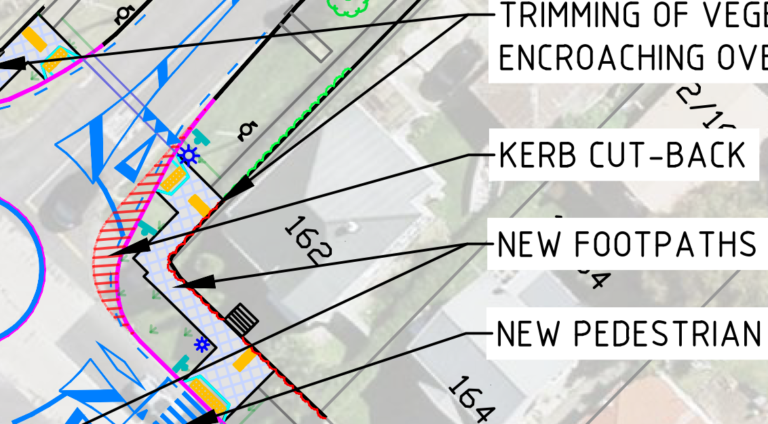Updated 30 October 2019: Good news! Advocacy works! AT will build this roundabout as originally designed, with crossings on all four arms. Thank you to Nicholas Lee, local MP Denise Lee, and every single one of you who raised your voices. Onwards and upwards…
The roundabout being built at the Victoria/Church intersection in Onehunga will have the four crossings as originally proposed. The project team have work hard with with the community in the past week to find a resolution. Construction starts Monday! Good work @AklTransport pic.twitter.com/rRRGwYQthF
— John N (@johnage) October 30, 2019
Earlier this week, Twitter lit up with reactions to Auckland Transport’s redesign of an Onehunga intersection. While the proposed design – a roundabout on a raised table – is in many ways an improvement on the existing situation, it wasn’t hard to spot the reason for the general dismay.
The original design for the roundabout had crossings on all four arms. But the revised design watered that down… to just one. For a safety fix aimed at making the streets safer for pedestrians in particular, something felt off. Especially now Auckland is officially a Vision Zero region.
This guest blog post by Nicholas Lee of Bike Onehunga takes a closer look at what’s at stake here.
Victoria Street and Church Street in Onehunga both carry high volumes of traffic at all times of the day, as well as being key local routes for walking and biking. Earlier in 2019, after a campaign by MP Denise Lee, the intersection of these two streets was recognised as one of the most dangerous in Auckland. You can get a sense of how risky it is for pedestrians in this video clip:
Auckland Transport agreed to carry out an urgent upgrade…
… and the initial redesign in April 2019 was good. It included raised tables with four crossings, one on each leg. People had priority.

However, after a consulting period and review, Auckland Transport decided that this design was not safe. In an October update on the project, they explained the new design:
“These crossings will no longer include zebra markings to prevent potential incidents between drivers and people crossing the road.”
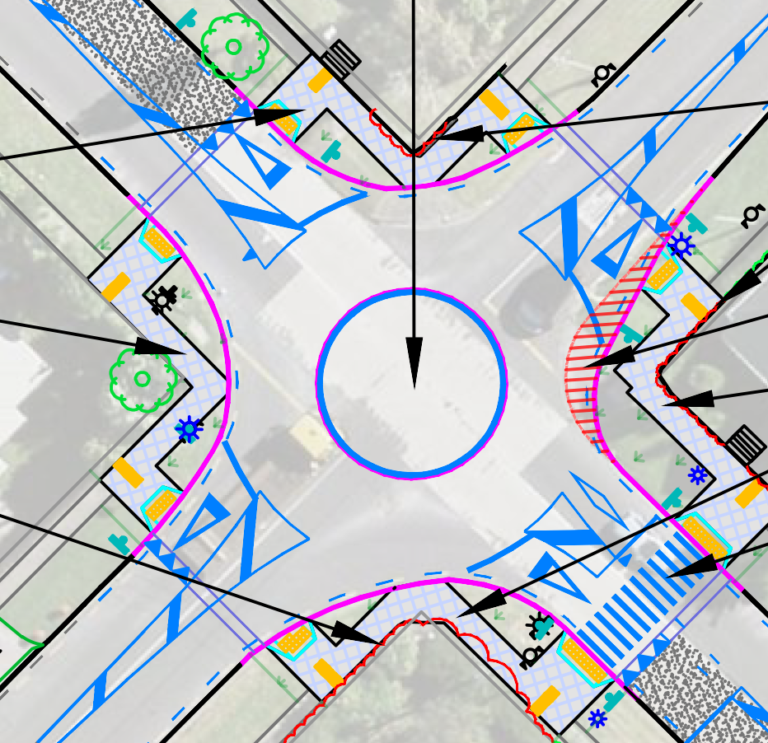
And just to make it clear, AT further states:
Convenient crossing options will remain, but pedestrians will not have the right of way.
This was my reaction, and I wasn’t alone:
"These crossings will no longer include zebra markings to prevent potential incidents between drivers and people crossing the road."
I have no idea how this improves safety for pedestrians.
— Nicholas Lee (@stateless) October 13, 2019
This change is much more than an adjustment of design; it indicates a step back in philosophy.
Both Church St and Victoria St house many of Onehunga’s residents. In addition, Church Street is an important connection between Great South Road and Onehunga Mall, and onwards to the motorway, while Victoria Street connects to Mount Smart Road.
Over the second half of the 20th century, as the number of cars on Auckland streets rose, the shape of these streets has been gradually changed to allow for faster and smoother flow of car traffic. You can see how the corners of the intersection have been steadily carved of to prioritise turning vehicles, even since 1983.
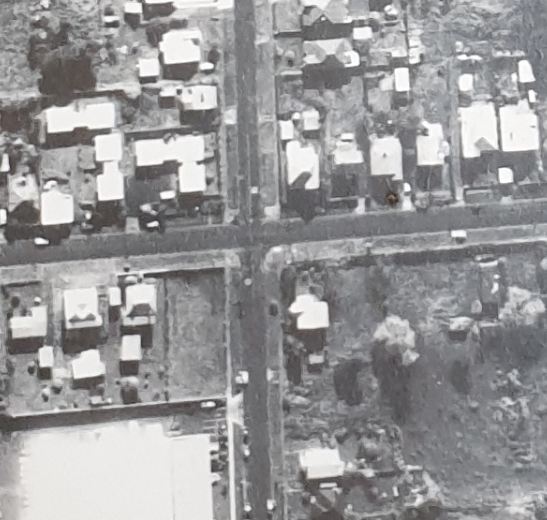

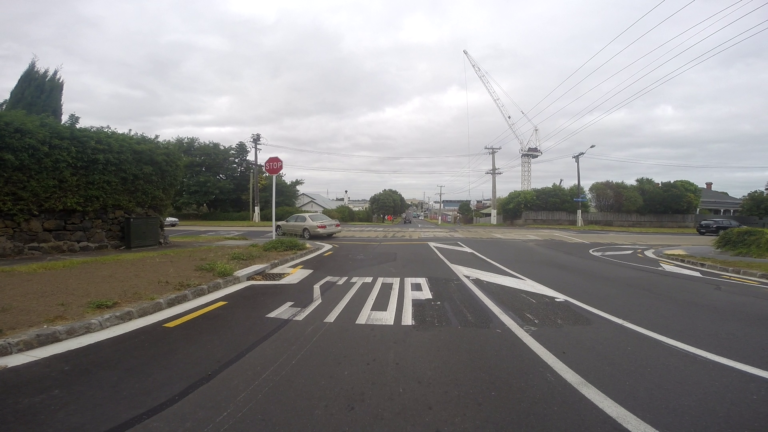
As a result, conditions for travellers on foot, bicycles, scooters or mobility vehicles have worsened. In order to safely cross Church Street, the closest pedestrian crossings are a considerable detour away – 350m to the west in front of St Joseph’s School; or at the signalised crossing with Captain Springs Road, 750m to the east.
And there are no marked or signalised crossings on the full 1.3km length of Victoria Street, from Mt Smart Road to Neilson Street.
Crossing at this intersection may be possible for a fit and brave adult prepared to take their life in their hands (as seen in the video at the beginning of this post), but it is much too frightening and dangerous for children, older people, anyone on mobility vehicles, or really anyone taking their safety seriously.
That fundamentally changed the project! How is removing Safe crossings make this better for vulnerable road users. In fact anyone not in a car. Surely there will be people crossing so let’s make it legally safe for them to do so @AklTransport
— Richard Hills (@RichardHills_) October 14, 2019
Yet two decades into the 21st century, much is changing in Onehunga. The train line reopened in 2011, and both Onehunga and Te Papapa train station are located within 10 minutes walk of this intersection. As part of the Auckland Unitary Plan, the population in and around Onehunga is expected to increase from 20,0000 to 40,000. Next year, the new residential development Fabric of Onehunga, within 50m of the intersection, will open with 239 new apartments and many more residents.
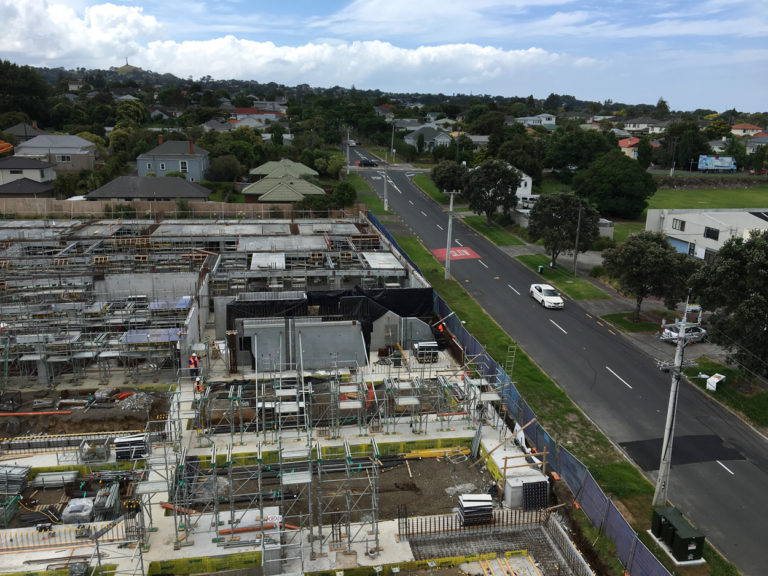
What this means is we can expect to see many more people walking through this intersection to access the train station or the bus stops on Church Street.
The first design from AT seemed to take this into account. It proposed an intersection that calmed traffic and ensured pedestrian and cyclist safety, while at the same time allowing a steady flow for those driving. At the time, it was framed like this:
“Installation of further pedestrian facilities will also help to improve safety and connections for people crossing the road here.”
Yet the second design – while still improving the safety and connections for car traffic, and bringing some traffic calming thanks to the raised table – takes a step back with regard to pedestrian movement. As well as scrapping three of the four pedestrian crossings, it further widens the intersection (presumably this time required because of the geometry of the centre island).
These wide corners reduce visibility, and shrink the available footpath space, and allow vehicles faster turning speeds.
Auckland Transport then state,
“As a result, the design requires fewer Broken Yellow Lines parking restrictions than originally proposed.”
Parked cars often reduce visibility at intersections. In this case, removing the proposed crossings – a safety benefit for pedestrian movement – allows the retention of parking, which in turn continues to reduce safety for people walking. A perverse outcome!
The new roundabout on Franklin Road has raised tables and pedestrian (zebra) crossings so why not here? Once again pedestrians and other active transport users are sidelined by prioritising vehicles. Wrong, wrong, wrong?
— Jennifer Ward (@jenospeno) October 14, 2019
When cars don’t slow down or stop in Auckland, we’re quick to blame the victim. “They should have waited!” What about the victims we don’t see – the people who don’t get to use the streets? What about the loss of agency of a 9 year old, who would love to walk to school by herself? A person in a wheelchair or walker, who can not cross the road quickly? The runner who has to go 400m out of their way to use the crossing at St Joseph’s School?
The thing is, we know it can be done differently:
Even when I was a traffic engineer back in the States we wouldn't do this except maybe in rural PA. If you have sight distance problems you fix the problem by removing obstructions, slowing the cars or putting in a stop sign. You don't remove the peds.
— Lewis (@thorplanner) October 14, 2019
And drivers can be obliged by design to give way to foot traffic:
Dutch roundabout for bicycles.https://t.co/ABkDbBVHuL
— Nicholas Lee (@stateless) July 29, 2019
Vision Zero – the goal of no deaths or serious injuries on the road – is a challenging path, and one that AT has publicly undertaken to travel for the greater good. As AT’s CEO clearly articulated when first introducing the idea:
“We have to be more innovative and deliver solutions where the safety of all road users is the primary goal. We need to work closely with our partners and communities to face this challenge.
A simple driving error, or someone crossing a road while distracted, should not lead to death or serious injury. What is at stake is the happiness and welfare of our friends and wh?nau, and our fellow Aucklanders.”
Vision Zero involves deciding to do what’s best for people, and not just what feels best for people in cars. We need to be bold. We need to set standards. We need to act.
Auckland Transport: please change this design back to the original plan!
— Nicholas Lee
https://twitter.com/DrJessBerentson/status/1183890443957723137?s=03

